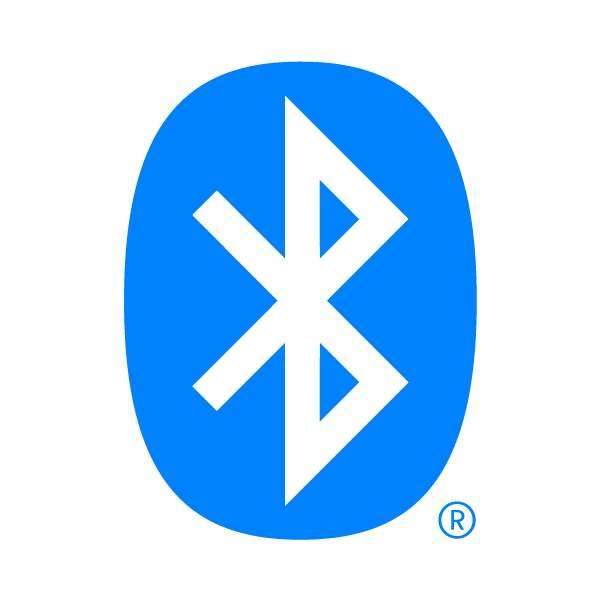|
Android 15
Android 15 is the fifteenth major release and the 22nd version of Android, the mobile operating system developed by the Open Handset Alliance and led by Google. The first developer preview was released on February 16, 2024, the first beta was released on April 11, 2024, and the final source code was released on September 3, 2024. Android 15 was released for Google Pixel devices on October 15, 2024. , 4.51% of Android devices run Android 15. History Android 15 is internally codenamed "Vanilla Ice Cream". The first developer preview (also known as DP1) for Android 15 was released on 16 February 2024, while the second developer preview (DP2) was released on 21 March 2024. The first beta of Android 15 was released on April 11, 2024. It contained updates such as displaying apps as edge-to-edge by default, and app archiving. The second beta launched on May 15, 2024, and came with features such as private space, improved widget previews, and improved picture-in-picture. The third b ... [...More Info...] [...Related Items...] OR: [Wikipedia] [Google] [Baidu] |
Android 15 Logo
Android may refer to: Science and technology * Android (robot), a humanoid robot or synthetic organism designed to imitate a human * Android (operating system), Google's mobile operating system ** Bugdroid, a Google mascot sometimes referred to as “Android” * Android (drug), a brand name for the synthetic hormone methyltestosterone Arts and entertainment Film * '' Android Kunjappan Version 5.25'', a 2019 film directed by Ratheesh Balakrishnan Poduval * ''Android'' (film), a 1982 film directed by Aaron Lipstadt * ''Android'', the Russian title for the 2013 film ''App'' Music * The Androids, an Australian rock band * "Android" (TVXQ song), 2012 * "Android", a song by Green Day from the album '' Kerplunk'' * "Android", a song on The Prodigy's ''What Evil Lurks'' EP Games * ''Android'' (board game), published by Fantasy Flight Games Other uses in arts and entertainment * The Android (DC Comics), character * ''The Android'' (novel), by K. A. Applegate * Android 17, a chara ... [...More Info...] [...Related Items...] OR: [Wikipedia] [Google] [Baidu] |
Codename
A code name, call sign or cryptonym is a code word or name used, sometimes clandestinely, to refer to another name, word, project, or person. Code names are often used for military purposes, or in espionage. They may also be used in industrial counter-espionage to protect secret projects and the like from business rivals, or to give names to projects whose marketing name has not yet been determined. Another reason for the use of names and phrases in the military is that they transmit with a lower level of cumulative errors over a walkie-talkie or radio link than actual names. Military origins During World War I, names common to the Allies referring to nations, cities, geographical features, military units, military operations, diplomatic meetings, places, and individual persons were agreed upon, adapting pre-war naming procedures in use by the governments concerned. In the British case names were administered and controlled by the Inter Services Security Board (ISSB) staffed ... [...More Info...] [...Related Items...] OR: [Wikipedia] [Google] [Baidu] |
Linux Kernel Version History
This article documents the version history of the Linux kernel. The Linux kernel is a free and open-source, monolithic, Unix-like operating system kernel. It was conceived and created in 1991 by Linus Torvalds. Linux kernels have different support levels depending on the version. The oldest currently-supported version, 4.9, released in December 2016, was declared to have six years of Long-Term Support (LTS), followed by Super-Long-Term Support (SLTS), i.e. Civil Infrastructure Platform will provide support (for 32-bit ARM and x86-64 only) until at least 2026, possibly until 2036. Releases 6.x.y Releases 5.x.y Releases 4.x.y Releases 3.x.y The jump from 2.6.x to 3.x wasn't because of a breaking update, but rather the first release of a new versioning scheme introduced as a more convenient system. Releases 2.6.x.y Versions 2.6.16 and 2.6.27 of the Linux kernel were unofficially supported in a long-term support (LTS) fashion, before a 2011 working ... [...More Info...] [...Related Items...] OR: [Wikipedia] [Google] [Baidu] |
Standard-dynamic-range Video
Standard-dynamic-range (SDR) video is a video technology which represents light intensity based on the brightness, contrast and color characteristics and limitations of a cathode ray tube (CRT) display. SDR video is able to represent a video or picture's colors with a maximum luminance around 100 cd/m2, a black level around 0.1 cd/m2 and Rec.709 / sRGB color gamut. It uses the gamma curve as its electro-optical transfer function. The first CRT television sets were manufactured in 1934 and the first color CRT television sets were manufactured in 1954. The term "standard-dynamic-range video" was adopted to distinguish SDR video from high-dynamic-range video, a new technology that was developed in the 2010s to overcome SDR's limits. Technical details Transfer function Conventional gamma curves: * Opto-electronic transfer function (OETF): ** Rec. 601 (analog video signals in SD-TV digital video form) ** Rec. 709 ( HD-TV) ** Rec. 2020 ( UHD-TV) ** sRGB * Electro-optical ... [...More Info...] [...Related Items...] OR: [Wikipedia] [Google] [Baidu] |
High Dynamic Range
High dynamic range (HDR) is a dynamic range higher than usual, synonyms are wide dynamic range, extended dynamic range, expanded dynamic range. The term is often used in discussing the dynamic range of various signals such as images, videos, audio or radio. It may apply to the means of recording, processing, and reproducing such signals including analog and digitized signals. The term is also the name of some of the technologies or techniques allowing to achieve high dynamic range images, videos, or audio. Imaging In this context, the term ''high dynamic range'' means there is a lot of variation in light levels within a scene or an image. The '' dynamic range'' refers to the range of luminosity between the brightest area and the darkest area of that scene or image. (HDRI) refers to the set of imaging technologies and techniques that allow to increase the dynamic range of images or videos. It covers the acquisition, creation, storage, distribution and display of images a ... [...More Info...] [...Related Items...] OR: [Wikipedia] [Google] [Baidu] |
WebSQL
Web SQL Database is a deprecated web browser API specification for storing data in databases that can be queried using SQL variant. The API is supported by Google Chrome, Opera, Microsoft Edge, and the Android Browser, albeit support is slowly being phased out. Web SQL was deprecated and removed for third-party contexts in Chromium 97. Web SQL access in insecure contexts is deprecated as of Chromium 105 at which time a warning message will be shown in the Chrome DevTools Issue panel. The W3C Web Applications Working Group ceased working on the specification in November 2010, citing a lack of independent implementations (i.e. using database system other than SQLite as the backend) as the reason the specification could not move forward to become a W3C Recommendation. Mozilla Corporation was one of the major voices behind the break-up of negotiations and deprecation of the standard, while at the same time being the main proponents behind an 'alternative storage' standard, IndexedD ... [...More Info...] [...Related Items...] OR: [Wikipedia] [Google] [Baidu] |
Bluetooth
Bluetooth is a short-range wireless technology standard that is used for exchanging data between fixed and mobile devices over short distances and building personal area networks (PANs). In the most widely used mode, transmission power is limited to 2.5 milliwatts, giving it a very short range of up to . It employs Ultra high frequency, UHF radio waves in the ISM bands, from 2.402GHz to 2.48GHz. It is mainly used as an alternative to wire connections, to exchange files between nearby portable devices and connect cell phones and music players with wireless headphones. Bluetooth is managed by the Bluetooth Special Interest Group (SIG), which has more than 35,000 member companies in the areas of telecommunication, computing, networking, and consumer electronics. The Institute of Electrical and Electronics Engineers, IEEE standardized Bluetooth as IEEE 802.15.1, but no longer maintains the standard. The Bluetooth SIG oversees development of the specification, manages the qualificat ... [...More Info...] [...Related Items...] OR: [Wikipedia] [Google] [Baidu] |
Ars Technica
''Ars Technica'' is a website covering news and opinions in technology, science, politics, and society, created by Ken Fisher and Jon Stokes in 1998. It publishes news, reviews, and guides on issues such as computer hardware and software, science, technology policy, and video games. ''Ars Technica'' was privately owned until May 2008, when it was sold to Condé Nast Digital, the online division of Condé Nast Publications. Condé Nast purchased the site, along with two others, for $25 million and added it to the company's ''Wired'' Digital group, which also includes '' Wired'' and, formerly, Reddit. The staff mostly works from home and has offices in Boston, Chicago, London, New York City, and San Francisco. The operations of ''Ars Technica'' are funded primarily by advertising, and it has offered a paid subscription service since 2001. History Ken Fisher, who serves as the website's current editor-in-chief, and Jon Stokes created ''Ars Technica'' in 1998. Its purpose w ... [...More Info...] [...Related Items...] OR: [Wikipedia] [Google] [Baidu] |
Android 5
Android Lollipop ( codenamed Android L during development) is the fifth major version of the Android mobile operating system developed by Google and the 12th version of Android, spanning versions between 5.0 and 5.1.1. Unveiled on June 25, 2014 at the Google I/O 2014 conference, it became available through official over-the-air (OTA) updates on November 12, 2014, for select devices that run distributions of Android serviced by Google (such as Nexus and Google Play edition devices). Its source code was made available on November 3, 2014. The first phone with Android Lollipop was Nexus 6. One of the most prominent changes in the Lollipop release is a redesigned user interface built around a design language known as Material Design, which was made to retain a paper-like feel to the interface. Other changes include improvements to the notifications, which can be accessed from the lockscreen and displayed within applications as top-of-the-screen banners. Google also made internal ch ... [...More Info...] [...Related Items...] OR: [Wikipedia] [Google] [Baidu] |
Android 4
Android 4 may refer to: * Android Ice Cream Sandwich (4.0 – 4.0.4) * Android Jelly Bean Android Jelly Bean, or Android 4.1 is the codename given to the tenth version of the Android mobile operating system developed by Google, spanning three major point releases (versions 4.1 through 4.3.1). Among the devices that run Android 4.1 t ... (4.1 – 4.3.1) * Android KitKat (4.4 – 4.4.4) {{Short pages monitor 4. ... [...More Info...] [...Related Items...] OR: [Wikipedia] [Google] [Baidu] |
Privacy Sandbox
The Privacy Sandbox is an initiative led by Google to create web standards for websites to access user information without compromising privacy. Its core purpose is to facilitate online advertising by sharing a subset of user private information without the use of third-party cookies. The initiative includes a number of proposals, many of these proposals have bird-themed names which are changed once the corresponding feature reaches general availability. The technology include Topics API (formerly Federated Learning of Cohorts or FLoC), Protected Audience, Attribution Reporting, Private Aggregation, Shared Storage and Fenced Frames as well as other proposed technologies. The project was announced in August 2019. The initiative has been described as anti-competitive and has generated an antitrust response. Privacy Sandbox will also be available on Android. On September 7, 2023, Google announced general availability of Privacy Sandbox APIs, naming explicitly Topics, Protected Audi ... [...More Info...] [...Related Items...] OR: [Wikipedia] [Google] [Baidu] |


